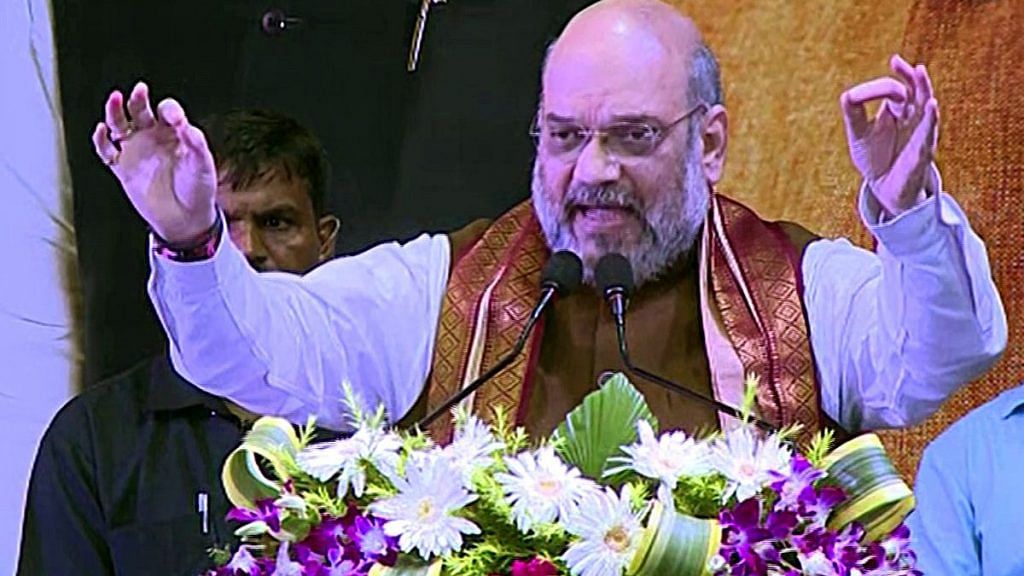As Indian politicians debate a nationwide NRC and Home Minister Amit Shah brands illegal Bangladeshi immigrants as “ghuspethiye” and “termites”, data tells us a very different story.
“Bangladesh has surpassed India as the fastest-growing South Asian economy,” according to the Asian Development Bank. A 2018 report using World Bank data said, “Bangladesh could top India’s per capita income by 2020″. “Growth lessons India can take from new frontrunner Bangladesh”, goes another.
One will come across numerous headlines like these in Indian and global media today. These are mostly based on data provided by world bodies like the United Nations Development Programme, the Asian Development Bank and Standard Chartered.
Bangladesh is already performing better than India in terms of GDP growth and is also racing ahead in many social indicators like life expectancy, which is 72 years for an average Bangladeshi as against 68 years for an Indian and 66 years for a Pakistani.
All this data is publicly available at a time when “throw (infiltrators) into the Bay of Bengal” has become a popular political slogan coined by BJP president Amit Shah. But such is the scale of political rhetoric in India these days, and the staggering level of public belief in the words of BJP politicians, that data detailing Bangladesh’s economic boom stands emaciated.
Also read: Amit Shah vilifying Bangladeshis while PM Modi rolls out the red carpet for Sheikh Hasina
Verbal assault on illegal immigrants
Through its final National Register of Citizens (NRC), Assam has already published a list of non-Indians — mostly ‘illegal’ Bangladeshi immigrants. It’s another story that many of those declared non-Indians in the NRC are Hindus and the BJP is understandably worried about their exclusion from the list. This could be owing to the fact that people migrating from Bangladesh are mostly Hindu Dalits.
Parties like the BJP and the Shiv Sena have been blaming ‘secular’ political parties for treating these immigrants as a vote bank. The BJP has promised that once it comes to power in states where it has not yet established a foothold, it will oust all such immigrants from India. At a rally in Kolkata, Amit Shah had last week vowed that “each and every infiltrator in India will be shown the door”. In the run-up to the 2019 Lok Sabha election, Shah equated Bangladeshi immigrants as “termites”. The issue had been the raison d’etre for the formation and existence of Asom Gana Parishad, once the ruling party of Assam, in its early days.
The BJP and the Shiv Sena consider these immigrants as a threat to national security and fear that they can change India’s religious demography. Right-wing fundamentalists also believe that if the inflow is not stopped, then the day is not far when the supremacy of the Hindu community could be threatened.
Bangladeshis are also squarely blamed for many criminal activities, including smuggling of cows for slaughtering.
Also read: Bangladesh is booming and here’s why — PM Sheikh Hasina explains
India lagging behind Bangladesh
But Indian politicians have yet to debate why the economy of Bangladesh is growing at a faster rate than India’s. There’s no denying that the Indian economy is stagnating and is currently steeped in a crippling slowdown while Bangladesh’s economy is flourishing. The natural corollary to this will be bridging of the gap between the two economies. In terms of per capita income too, Bangladesh could soon leave India behind.
Another aspect to the growth trajectories of two nations is that India is banking more on the service sector for its GDP growth, whereas in Bangladesh, the manufacturing sector is contributing significantly to the growth. This implies that a steadily growing economy will generate more employment than an economy that is sinking. Moreover, Bangladesh is also performing better than India in terms of female workforce participation.
Bangladesh has also trailed India in terms of healthcare access and quality. Even under the Narendra Modi government’s flagship Ayushman Bharat scheme, the laggard states like Bihar and West Bengal in health indicators are among the states getting the least amount of money from the Centre.
Also read: Bengali Hindu women not on NRC pin hopes on BJP promise of another list, citizenship bill
India needs to raise its game
So, do these grim realities mean that we are going to enter a new era in South Asia, where Bangladeshis will be richer and healthier and perhaps even happier than Indians?
Will this lead to a complete clampdown on refugees and illegal migrant inflow to India? Will this lead to a situation in which the poor strata of the Indian society will see Bangladesh as the promised land where they can get jobs and supposedly better health care? We do not know for sure yet.
Indians immigrating to richer countries is not a new phenomenon. Around 3.09 crore Indians are living abroad as per 2018 data. More than 44 lakh of them live in the US alone. The UK and Saudi Arabia are among other favourite destinations of Indians looking for greener pastures.
Living abroad does not make Indians less patriotic. Afterall, they chant Bharat Mata ki Jai with greater enthusiasm and are seemingly more vocal on social media platforms than Indians at home.
So, it will not be ethically and morally wrong if hordes of Indians work in Bangladesh and send money back home, also contributing to the Indian economy.
Who knows if Bangladesh gets its own version of the BJP with a similar anti-immigrant agenda, it might prepare its own NRC in future? We can only hope that the Bangladeshis do not find any Indians residing illegally there.
So, instead of fantasising about throwing out the illegal immigrants, a better course of action for India would be to make its economy grow at a faster pace, invest more in public-welfare sectors, especially on health and education, and eradicate or at least mitigate inequality. We can’t afford to lag behind the so-called ‘termites’.
The author is a senior journalist. Views are personal.
